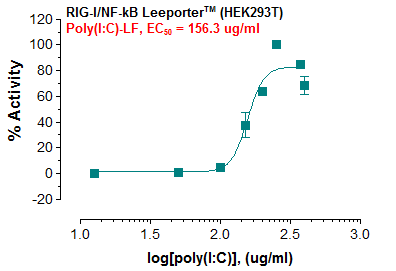Recombinant Human Heme Oxygenase 1/HO-1
Shipping Info:
For estimated delivery dates, please contact us at [email protected]
| Amount : | 50 µg |
| Content : | Supplied as a 0.2 µm filtered solution of 20mM PB, 150mM NaCl, 1mM EDTA, pH 7.4. |
| Storage condition : | Store at -20°C, stable for 6 months after receipt. Please minimize freeze-thaw cycles. |
| AA sequence : | MERPQPDSMPQDLSEALKEATKEVHTQAENAEFMRNFQKGQVTRDGFKLVMASLYHIYVALEEEIERNKESPVFAPVYFPEELHRKAALEQDLAFWYGPRWQEVIPYTPAMQRYVKRLHEVGRTEPELLVAHAYTRYLGDLSGGQVLKKIAQKALDLPSSGEGLAFFTFPNIASATKFKQLYRSRMNSLEMTPAVRQRVIEEAKTAFLLNIQLFEELQELLTHDTKDQSPSRAPGLRQRASNKVQDSAPVETPRGKPPLNT |
Source: E.coli.
MW :29.86kD.
Recombinant Human Heme Oxygenase 1 is produced by our E.coli expression system and the target gene encoding Met1-Thr261 is expressed. Heme Oxygenase 1 (HO-1) is an enzyme in endoplasmic reticulum that belongs to the heme oxygenase family. HO-1 cleaves the heme ring at the alpha methene bridge to form Biliverdin. Biliverdin is subsequently converted to Bilirubin by Biliverdin reductase. In physiological state, the highest activity of HO-1 is found in the spleen, where senescent erythrocytes are sequestrated and destroyed. HO-1 activity is highly inducible by its substrate heme and by various non-heme substances such as heavy metals, bromobenzene, endotoxin, oxidizing agents and UVA. HO-1 is involved in the regulation of cardiovascular function and response to a variety of stressors. Defects in HO-1 are the cause of Heme Oxygenase 1 deficiency, resulting in marked erythrocyte fragmentation and intravascular hemolysis, coagulation abnormalities, endothelial damage, and iron deposition in renal and hepatic tissues.
MW :29.86kD.
Recombinant Human Heme Oxygenase 1 is produced by our E.coli expression system and the target gene encoding Met1-Thr261 is expressed. Heme Oxygenase 1 (HO-1) is an enzyme in endoplasmic reticulum that belongs to the heme oxygenase family. HO-1 cleaves the heme ring at the alpha methene bridge to form Biliverdin. Biliverdin is subsequently converted to Bilirubin by Biliverdin reductase. In physiological state, the highest activity of HO-1 is found in the spleen, where senescent erythrocytes are sequestrated and destroyed. HO-1 activity is highly inducible by its substrate heme and by various non-heme substances such as heavy metals, bromobenzene, endotoxin, oxidizing agents and UVA. HO-1 is involved in the regulation of cardiovascular function and response to a variety of stressors. Defects in HO-1 are the cause of Heme Oxygenase 1 deficiency, resulting in marked erythrocyte fragmentation and intravascular hemolysis, coagulation abnormalities, endothelial damage, and iron deposition in renal and hepatic tissues.
Endotoxin : Less than 0.1 ng/µg (1 IEU/µg) as determined by LAL test.
For Research Use Only. Not for use in diagnostic/therapeutics procedures.
| Subcellular location: | Microsome, Endoplasmic reticulum membrane |
| Tissue Specificity: | Expressed at higher levels in renal cancer tissue than in normal tissue (at protein level). |
| BioGrid: | 109405. 36 interactions. |
|
There are currently no product reviews
|
















.png)









